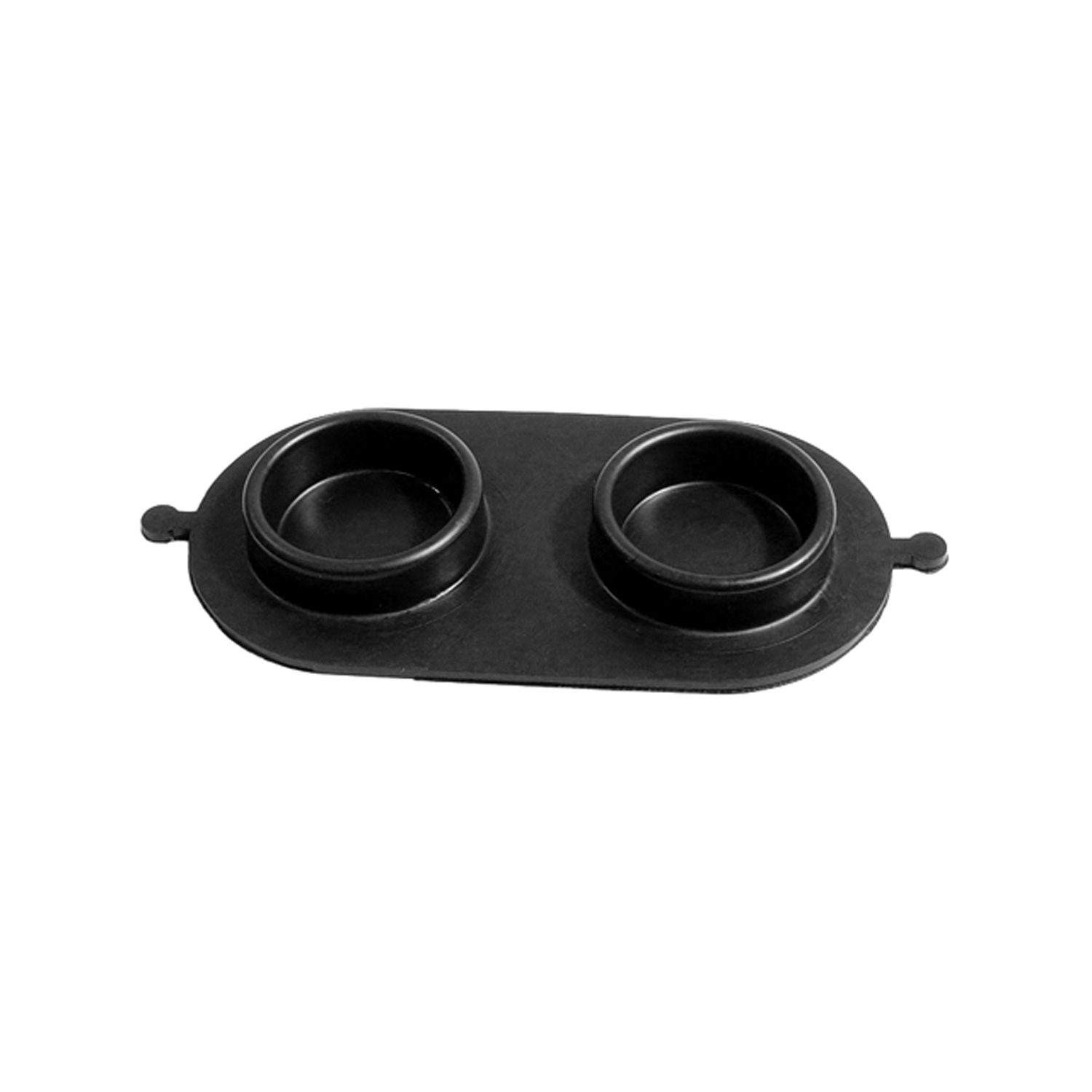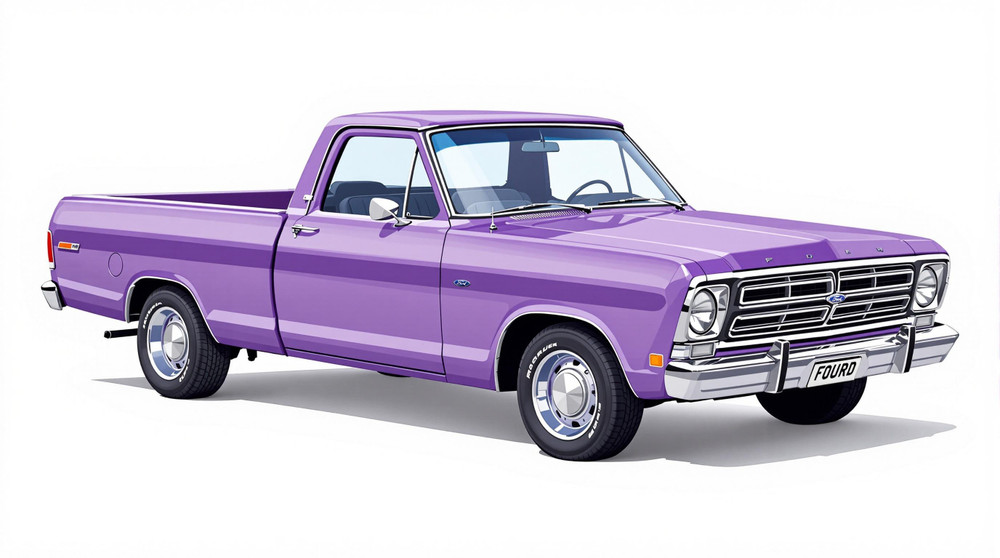Image of 1974 Ford Courier, Note: These illustrations use artistic license and may differ from actual historical models.
Performance Metrics
Fundamental Metrics
Emotional Appeal
MMP Rating
| Engine Specifications | |
|---|---|
| Engine: | 1.8L Mazda F/4 |
| Displacement: | 1.8L |
| Horsepower: | 74 hp |
| Torque: | 92 lb-ft |
| Compression Ratio: | 8.6:1 |
| Ignition System: | Electronic |
| Cooling System: | Liquid-cooled |
| Performance Specifications | |
| 0-60 Time: | Estimated 20 seconds |
| 1/4 Mile Time: | Estimated 22 seconds |
| Top Speed: | 80 mph |
| Transmission and Drive | |
| Drive Type: | Rear-wheel drive |
| Transmission Type: | 4-speed manual |
| Fuel and Efficiency | |
| Fuel System Type: | Carburetor |
| MPG: | 20-25 mpg |
| Dimensions and Brakes | |
| Brakes: | Front disc and rear drum brakes |
| Wheelbase: | 102.6 inches |
| Weight: | 2,400 lbs |
Note: Specifications for classic cars are given to the best of our ability, considering the limited and variant data available.
The Unassuming Workhorse: The 1974 Ford Courier
In an era where utility and compact design began to take center stage, the 1974 Ford Courier emerged as a testament to practicality fused with classic Ford reliability. Born from a partnership with Mazda, this light-duty truck was Ford's answer to the growing need for smaller, more fuel-efficient pickups during the oil crisis of the 1970s. Its compact dimensions belied a robust work ethic, quickly endearing it to tradespeople and small business owners alike. A notable moment in its history was its role in pioneering the compact truck segment in the United States, a category that would see explosive growth in the years to follow.
Design and Innovation
The Courier's exterior was characterized by its straightforward, no-nonsense styling. It featured a simple grille design flanked by round headlights, a utilitarian stance, and a bed designed to haul more than its modest size might suggest. Inside, the cabin was basic but functional, with durable materials meant to withstand the rigors of daily use. Technological features were sparse, as this was a vehicle designed with purpose over pomp. Color options ranged from classic whites and blues to more vibrant hues, with the brighter shades now being a nostalgic nod to the era's taste. The most iconic body style was the standard two-door pickup, which struck the perfect balance between utility and maneuverability.
Historical Significance
The 1974 Ford Courier's impact lay in its introduction of the compact pickup concept to American consumers. At a time when bigger was often equated with better, the Courier broke the mold, offering a smaller footprint without sacrificing the utility expected from a Ford truck. Its success paved the way for future models and competitors alike, reshaping the American automotive landscape.
Performance and Handling
Under the hood, the Courier was modest by today's standards but competent in its day, with performance figures that suited its intended use as a light hauler. Handling was nimble for a pickup, and its smaller size allowed for a more car-like driving experience. Drivers could expect to hear the distinct hum of its four-cylinder engine—a sound that became synonymous with small trucks of the period.
Ownership Experience
The Ford Courier was often seen as a daily driver and an essential tool for small businesses. Its reliability and ease of repair made it a favorite among those who valued practicality and low running costs. While not as luxurious or feature-rich as some of its descendants, it provided a straightforward, honest driving experience.
Fun Facts
The Courier may not have been the flashiest vehicle on the road, but it has its share of interesting trivia. For example, it was one of the first vehicles to be marketed heavily towards younger buyers looking for an affordable yet capable vehicle. While it didn't set any speed records, it did achieve impressive sales figures, cementing its place in compact truck history.
Collector's Information
Today, the 1974 Ford Courier is a rare sight, with production numbers not as high as some of its contemporaries. Its value on the collector's market can vary widely based on condition, originality, and nostalgia factor. A well-preserved Courier might fetch anywhere from $5,000 to $15,000 or more for pristine examples. The market trend for these little trucks is slowly appreciating as enthusiasts seek out unique pieces of automotive history.
Conclusion
The 1974 Ford Courier may not have been the star of any blockbuster films or headline-grabbing races, but it carved out a niche that has proven critical to the evolution of pickup trucks in America. Its legacy is one of practicality, reliability, and innovation at a time when those qualities were needed most. As we look back on this humble workhorse, we're reminded that sometimes the most significant revolutions come in small packages.
1974 Ford Courier Catalog of Parts
 1974 Ford Courier Front Stabilizer End Repair Kit-BNK 24Front Stabilizer End Repair Kit. 22-piece set for two stabilizer bars. Contains all rubber bushings, washers, bolts and nuts, enough for one front end. Set
1974 Ford Courier Front Stabilizer End Repair Kit-BNK 24Front Stabilizer End Repair Kit. 22-piece set for two stabilizer bars. Contains all rubber bushings, washers, bolts and nuts, enough for one front end. Set 1974 Ford Courier Brake Master Cylinder Cover Seal. Replaces OEM #C7AZ2167-A-RP 2-BBrake Master Cylinder Cover Seal. Replaces OEM #C7AZ2167-A. Each
1974 Ford Courier Brake Master Cylinder Cover Seal. Replaces OEM #C7AZ2167-A-RP 2-BBrake Master Cylinder Cover Seal. Replaces OEM #C7AZ2167-A. Each 1974 Ford Courier Window Crank Handle Knob and Attaching Parts. Clear. Each-RP 400-BWindow Crank Handle Knob and Attaching Parts. Clear. Each
1974 Ford Courier Window Crank Handle Knob and Attaching Parts. Clear. Each-RP 400-BWindow Crank Handle Knob and Attaching Parts. Clear. EachWhy Choose Metro?
For over 100 years, Metro Moulded Parts has been the pinnacle of quality in classic car restoration parts. Our commitment to precision and authenticity in every component ensures a perfect fit and an OEM-level appearance.
- Expert Craftsmanship & Quality: Each part is a testament to our dedication to reliability and perfection, crafted from original designs and thoroughly tested.
- Advanced Technology: We use cutting-edge techniques to create flawless, long-lasting parts that surpass others in performance.
- SuperSoft Sponge – The Ultimate Door Seal: Not only are our door seals 30% softer than competitors', but they're also guaranteed to never leak. They effectively reduce wind and road noise, enhancing your classic car's comfort and driving experience.
- Proudly American: Our parts are a product of American craftsmanship, made in the USA with a spirit of excellence and heritage.
- Unrivaled Warranty: We back our products with a 30-year industry-leading warranty, a testament to our confidence in their quality.
Join us in preserving the legacy of classic cars with parts that are crafted for perfection, not just made.

